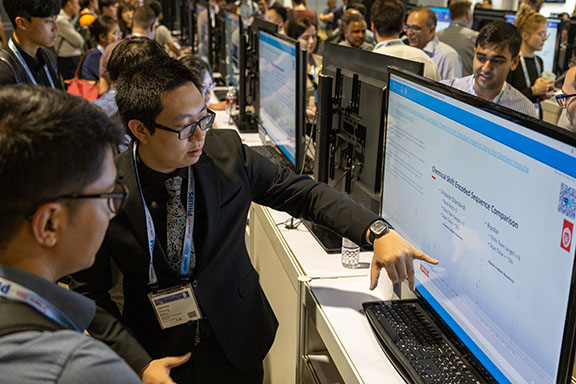Quick Links
Department of Medical Physics
Medical physics was established as a specialty focus within the University of Wisconsin School of Medicine and Public Health, creating the first and only basic science Department of Medical Physics of its kind in the country. Faculty within the department have a scholarly focus on discoveries and inventions in imaging and therapy systems, that lead to scientific translation into clinical trials or to industrial translation to create products through collaboration or via new venture entrepreneurship. Medical physics is led by 30 core faculty with 45 affiliate and 14 emeritus faculty members, with many having joint appointments in clinical departments such as Radiology and Human (Radiation) Oncology.
With an annual enrolled cohort of approximately 90 graduate students, the department is home to the largest group of medical physics doctoral students in the United States and the world, providing an accredited degree from the Commission on Accreditation of Medical Physics Educational Programs (CAMPEP). The training curriculum provides perhaps the deepest and most extensive training available in the physics and engineering of diagnostic and therapeutic systems. The research focus of the department is the signature feature that leads students towards being national leaders, with expertise in their chosen area of focus. In the decades since formation, department alumni have gone on to lead many institutions throughout the country in aspects of medical physics.
Seminars
Join us on Mondays from 4-5 p.m., for our weekly seminar series.
Returning January 26 with guest Dr. Sree Bash Chandra Debnath from Loyola University, Chicago
News
- Parkinson’s treatment tested at UW showing promise in first clinical trial
- What we published: September 2025
- What we published: July & August 2025
- New faculty profile: Ahtesham Khan works to advance radiation measurement technology & delivery
- Marina Emborg receives Steenbock Professorship in Behavioral and Neural Sciences
- Department of Medical Physics heads to AAPM in Washington, D.C.
Our Research
UW-Madison ranks 6th in the national research rankings reporting over $1.7 billion in annual expenditures last year. In medical physics, our research mission is to develop solutions for accurate diagnosis and optimized treatment of human disease.

Support Medical Physics
Through gifts to the Department of Medical Physics, donors are making a real difference in the lives of students.

